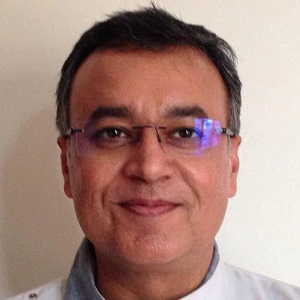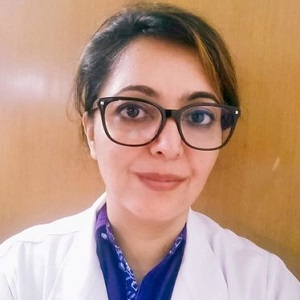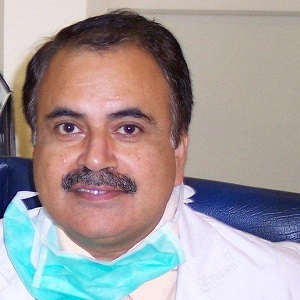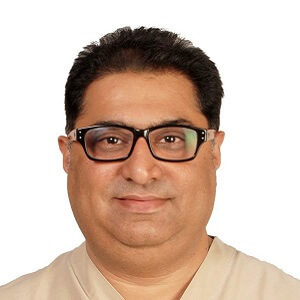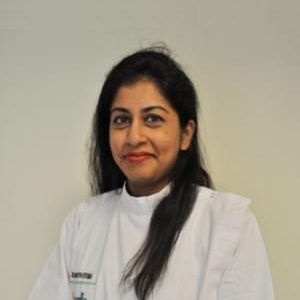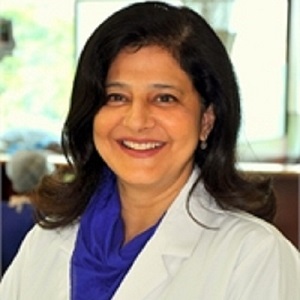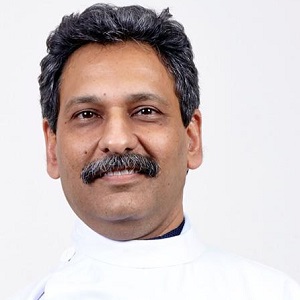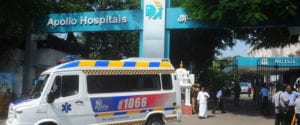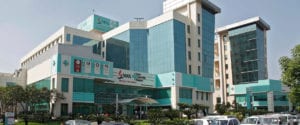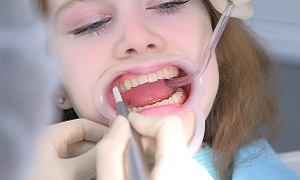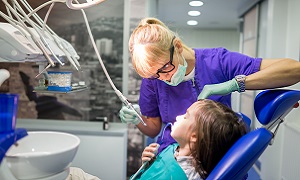Best Doctors in India for Dental Braces
- Dentist and Dental Surgeon, New Delhi, India
- Over 21 years’ experience
Profile Highlights:
- Dr. Adosh Lall is one of the best dentists in India. He is having an experience of over 21 years.
- He has been involved in imparting education to graduate and postgraduate students for 14 years. Also, he is an examiner of postgraduate students in India and Nepal.
- Dr. Adosh Lall has treated innumerable patients successfully in his past years as a dentist.
- Dentist, New Delhi, India
- Over 24 years’ experience
Profile Highlights:
- Dr. Jatin Ahuja is one of the most successful Orthodontists who has 24 years of experience in this field.
- He has performed numerous operations related to oral cavities in India and abroad.
- He has been treating several diseases related to oral health.
- Dentist, New Delhi, India
- Over 27 years’ experience
Profile Highlights:
- Dr. Smriti Bouri is a leading female Dental consultant who has been serving people for the last 27 years.
- She has performed a wide array of procedures all related to dental care.
- She served in the Indian Army during the early years of her career as a dentist.
- Dentist, Gurugram, India
- Over 20 years’ experience
Profile Highlights:
- Dr. Ravi S Batra is one of the most popular faces in the Department of Dentistry.
- He has 16 years of experience in treating patients who belong to different age groups.
- Dr. Batra has expert hands in diagnosing and treating orthodontic problems which mostly need surgical rectification.
- Dentist and Dental Surgeon, New Delhi, India
- Over 35 years’ experience
Profile Highlights:
- Dr. Neeraj Verma is one of those prominent dentists in India who is having more than 35 years of experience.
- He is the vice president of the Indian Dental Association in Delhi.
- Due to his sound experience in Dentistry, Dr. Neeraj Verma received the Vishisht Seva Medal by the President of India.
- Dentist and Dental Surgeon, New Delhi, India
- Over 32 years’ experience
Profile Highlights:
- Dr. Ashish Kakkar is a Dentist at Indraprastha Apollo Hospitals, New Delhi providing the best Dental care in India. He has an experience of more than 32 years.
- Dr. Kakkar is a dental surgeon providing advanced dental care to patients. Patients can reach out to him for specialized services like dental checkups, teeth reshaping or remodeling, prosthodontic treatment or Cosmetic/Aesthetic dentistry, RCT, Pulpectomy, treatment of gum ailments, sinus augmentation, and identification & treatment of tooth decay.
- Dentist, New Delhi, India
- Over 10 years’ experience
Profile Highlights:
- Dr. Aishwarya Verma is one of the leading Dental Consultants in India.
- She has been an excellent student throughout her academic life. She has completed BDS and MDS with flying colors.
- She has treated patients both within India and abroad and is widely known for her success.
- Dr. Aishwarya has diagnosed several cases related to oral health and treated them with her knowledge and experience.
- Dentist, Gurugram, India
- Over 20 years’ experience
Profile Highlights:
- Dr. Anjana Satyajit is a dedicated dentist with an experience of more than two decades.
- She is an expert in Endodontics and has been treating numerous patients all over the country.
- Dr. Satyajit has received her Graduation in Dentistry from Maulana Azad Medical College in Delhi.
- Dentist, Gurugram, India
- Over 20 years’ experience
Profile Highlights:
- Dr. Payal Nayar has been practicing dentistry for the pediatrics department for the last 20 years.
- She has expert hands in oral rehabilitation, pediatric root canals, orthodontic treatment, rampant caries, etc.
- She received Certification in the field of Prosthetic Dentistry from Smile India.
- Dentist, Gurugram, India
- Over 20 years’ experience
Profile Highlights:
- Dr. Vineet Ohri is one of those prominent dentists in India who has received special training in Endodontics.
- He has 20 years of experience in treating patients.
- Dr. Ohri worked in prominent hospitals like Indraprastha Apollo and Fortis Hospital, Vasant Kunj.
Best Hospitals in India for Dental Braces
Indraprastha Apollo Hospital, New Delhi
- City: New Delhi, India
Hospital Highlights:
- Indraprastha Apollo Hospital is a 700-bedded multispecialty hospital in the heart of the capital of India. It is a part of Apollo Hospital group, one of India’s most reputed healthcare chains. Indraprastha Apollo Hospital has been accredited by Joint Commission International, making it the first internationally accredited hospital in the country in 2005.
- There are 52 specialties in the hospital with one of the best cardiology centers in the country. The hospital is also equipped with State of the art infrastructure facilities with the largest Sleep Lab in Asia and the largest number of ICU bed facilities in India.
- The hospital also has one of the largest dialysis units in India along with a dedicated Bone Marrow Transplant unit.
- The latest and highly advanced technologies that are installed in the hospital include Da Vinci Robotic Surgery System, PET-MR, PET-CT, Cobalt-based HDR Brachytherapy, Brain Lab Navigation System, Tilting MRI, Portable CT scanner, 3 Tesla MRI, 128 Slice CT scanner, DSA Lab, Endosonography, Hyperbaric Chamber and Fibro scan.
Fortis Memorial Research Institute, Gurugram
- City: Gurugram, India
Hospital Highlights:
- Fortis Memorial Research Institute is a multi-super-specialty, quaternary care hospital with 1000 beds. The hospital comprises reputed clinicians, and international faculty and is also equipped with cutting-edge technology. The hospital is a part of Fortis Healthcare Limited, a reputed chain of private hospitals in India.
- It is a NABH-accredited hospital that is spread across 11 acres of land and has a capacity of 1000 beds. The hospital has 55 specialties and is one of the premier health care centers in the Asia Pacific region popularly known as “the Mecca of Healthcare”.
- The hospital has 260 diagnostic centers and is also equipped with the latest and advanced techniques that include 3 Telsa which is the world’s first Digital MRI technology. The hospital also has world-class Radiation Therapy techniques which have been developed by leading technology experts from Elekta and Brain Lab.
Apollo Hospital, Chennai
- City: Chennai, India
Hospital Highlights:
- Apollo Hospitals, Chennai, is one of the best hospitals for heart care in India. Over the years, Apollo has expanded all over India, as a healthcare chain.
- India’s first ‘Only Pancreas’ transplant was performed in Apollo Hospital. The hospital is known for successfully performing Asia’s first en-bloc combined heart and liver transplant, and over the years, it has attained a remarkable achievement in the global healthcare space. Around 3-4 organ transplants are performed in the hospital per day.
- Equipped with over 500 beds, this hospital in Chennai was established in 1983 and since then has been among the most preferred hospital for patients from all over the world.
- The hospital holds accreditation of the NABH and JCI and is the first hospital in India to be ISO 9001 and ISO 14001 certified. It is also the first South Indian Hospital to receive subsequent reaccreditation from the JCI USA 4 times.
Medanta-The Medicity, Gurgaon
- City: Gurugram, India
Hospital Highlights:
- One of India’s best and largest multi-specialty hospitals, Medanta was built with the aim to bring India to the highest standards of medical care. The hospital has been providing the best medical services to its patients, since its inception, with care, commitment, and compassion.
- Equipped with 1250 beds, the hospital was founded by Dr. Naresh Trehan in the year 2009 with an aim to provide the best medical care at affordable costs. The hospital is spread across 43 acres and includes 45 operation theatres and 350 beds dedicated solely to ICU. The hospital includes over 800 doctors, and more than 22 specialty departments and has a dedicated floor for individual specialty in order to offer the best services under one roof.
- The hospital is considered one of the premier institutes in India for Cardiac Care and includes staffs and members of high caliber. The hospital has 6 distinct centers of excellence.
Max Super Specialty Hospital, New Delhi
- City: New Delhi, India
Hospital Highlights:
- One of the well-regarded providers in India committed to the highest standards of clinical excellence and patient care, Max Super Specialty Hospital is a part of Max Healthcare, which is the second-largest healthcare chain in India. Regarded as one of the most well-regarded healthcare providers in the country, Max Super Specialty Hospital is committed to the highest standards of clinical excellence as well as patient care. The hospital is also equipped with the latest technology as well as cutting-edge research. The hospital is known to deliver and ensure the highest level of patient care.
- The hospital has more than 500 beds and offers treatment for over 35 specialties. The hospital also holds the credit of having installed the first Brain Suite in Asia. This is a highly advanced Neurosurgical machine that allows MRI to be taken while surgery is ongoing.
- Other advanced and latest technologies are also installed in the hospital such as the 1.5 Tesla MRI machine, 64 Slice CT Angiography, 4D ECHO, LINAC, and 3.5T MRI machine.
Artemis Hospital, Gurugram
- City: Gurugram, India
Hospital Highlights:
- One of the most well-known hospitals in the Delhi NCR, Artemis Hospital is the first hospital in Gurugram to get accredited by the Joint Commission International.
- With more than 40 specialties, the hospital has been designed to be one of the most technically advanced hospitals in the country, with the best medical and surgical health care. The hospital has eleven special and dedicated centers, for Heart, Cancer, Neurosciences, etc.
- The latest technologies in the hospital include Endovascular Hybrid Operating Suite and Flat panel Cath Labs for the cardiovascular department, 3 Tesla MRI, 16 slice PET CT, 64 Slice Cardiac CT Scan, HDR Brachytherapy, and highly advanced Image Guided Radiation Therapy techniques (LINAC) are installed in the hospital.
- The hospital has won several awards as well, since its inception.
BLK Max Super Specialty Hospital, New Delhi
- City: New Delhi, India
Hospital Highlights:
- Equipped with 650 beds, BLK Superspecialty Hospital is the largest stand-alone private sector hospital in Delhi.
- With over 1500 healthcare providers and 150 globally renowned super specialists, the hospital is one of Asia’s largest Bone Marrow Transplant Centres. The hospital is known for having some of the best cancer doctors in the country.
- The hospital is NABH and NABL accredited and was inaugurated by the first Prime Minister of India. Pt. Jawahar Lal Nehru.
Gleneagles Global Hospitals, Chennai
- City: Chennai, India
Hospital Highlights:
- Established in 1999, Gleneagles Global Hospital, Chennai, is one of the top healthcare facilities in Southern India. It is part of the Gleneagles Hospital Chain, which is the fourth largest healthcare chain in the country. The hospital specializes in multi-organ transplants of kidneys, liver, lungs, heart, etc.
- The hospital has an excellent infrastructure and state-of-the-art lab and equipment set-up. The hospital boasts cutting-edge technologies, a highly skilled team of doctors and surgeons, and trained support staff. Located in Perumbakam, Chennai, it is one of India’s premier health care destinations. The hospital has performed some of the most complex surgical and clinical procedures in India including multi-organ transplantations.
- The hospital’s lung transplantation program is one of the best in the country. The hospital is known for having performed India’s first single lung transplant and first minimal invasive lung transplant. It is also the only Indian hospital to be associated with King’s College Hospital, London, United Kingdom for liver transplantations.
Fortis Hospital, Mulund, Mumbai
- City: Mumbai, India
Hospital Highlights:
- Fortis Hospital in Mulund is a 315-bed multi-speciality tertiary care hospital with five JCI accreditations that offers a wide variety of diagnostic and therapeutic services. The Fortis Hospital in Mulund delivers patient-centred treatment with cutting-edge technology, highly skilled and experienced surgeons, and paramedical staff.
- This institution houses Maharashtra’s largest multi-organ transplant centre. It is also the first heart transplant centre in western India to conduct 100 or more consecutive heart transplants in under four years. It is the only hospital in the city to have multi-organ transplants and has handled the youngest patient for angioplasty. Fortis Hospital Mulund now boasts the first advanced surgical robot in central Mumbai.
- Cardiology and heart surgery, urology, nephrology, neurosciences, orthopaedics, digestive care, emergency and critical care, and maternity care are among the services provided by the hospital.
Kokilaben Dhirubhai Ambani Hospital, Mumbai
- City: Mumbai, India
Hospital Highlights:
- Kokilaben Dhirubhai Ambani Hospital, Named after the wife of Indian industrialist Dhirubhai Ambani, the founder of Reliance Industries, this is one of the top hospitals in Mumbai. This 750-bed multi-specialty hospital became operational in 2009. Known as one of India’s most advanced tertiary care facilities, the hospital is designed to raise India’s global standing as a healthcare hub, with an emphasis on excellence in clinical services.
- Kokilaben Dhirubhai Ambani Hospital uses Protocol and Care Pathway based treatment models to ensure the best outcomes for patients.
- The hospital represents a confluence of top-notch talent, cutting-edge technology, state-of-the-art infrastructure, and, most importantly commitment.
- The hospital also holds the accreditation of the NABH, NABL, CAP, and JCI.
- The hospital has been recognized as the No. 1 Multispecialty Hospital in Mumbai and the West Zone for the fifth year in a row in 2020 by The Week.
DENTAL BRACES
Dental braces are dental tools which orthodontists use for correcting crowded, crooked or misaligned teeth and jaws. Generally, people go for dental braces during their early teenage years, though adults can also benefit from them. The goal of dental braces is to align your teeth and jaws to help you produce an even bite and a pleasing smile.
There is also an option of customized, removable tools known as clear aligners or invisible braces, which can give a more acceptable appearance to some adults. You can discuss the pros and cons with your doctor to decide which one might be best for you.
Purpose
Dental braces can offer corrective treatment for various problems which includes:
- Too much space between your teeth
- Overcrowded or crooked teeth
- Upper front teeth that may overlap the lower teeth too much, which can be vertically or horizontally
- Upper front teeth that bite behind the lower ones
- Other jaw misalignment problems that might lead to an uneven bite
Braces can not only help with proper alignment of your teeth, but it can also improve the health of your mouth and the way you bite, chew and speak.
If you are an adult with braces, it may require you to wear them longer than a younger person would, though the results produced should still be similar. However, since your facial bones are no longer growing, there might be some problems, which braces alone can’t correct.
Preparation
If your regular dentist notices problems with your teeth or jaws that require treatment, it is likely that he/she will refer you to an orthodontist, a dentist specializing in diagnosing, preventing as well as treating dental and facial irregularities.
Children generally go for braces between the ages of eight and fourteen, while their teeth are easier to move and the facial bones are still growing.
The preparation generally involves the following:
Oral exam
X-rays
You’ll get a series of X-rays for determining the position of teeth. The panoramic X-ray is most commonly used. It shows the entire upper and lowers teeth in biting position and any teeth which may be still developing within the jaws. Special head X-rays can help determine the size, position, and relationship of jaws to teeth as well. These 3D X-rays are able to give a better idea of the true position of the teeth to each other.
Plaster models
You will need to bite into some soft material, which will remain on your teeth for a few minutes. From this impression, a plaster model of your teeth, i.e. a dental cast is created and the orthodontist is able to evaluate your bite. Sometimes, this dental cast might be scanned into a digital format for even further evaluation or treatment decisions.
Potential tooth extraction
If your mouth is overcrowded, there might be limited or even no room in the jaw for all the existing teeth. In such cases, the orthodontist may recommend removing one or more permanent teeth so that there is more room for the remaining teeth to fit comfortably. This can allow your teeth to fit better and can also allow adequate space for cleaning.
Other procedures
In severe cases, where tooth movement can’t alone correct a bite as it may be significantly out of alignment, jaw repositioning surgery might be required in combination with orthodontics.
After evaluation of your teeth and jaws is done, your orthodontist customizes a treatment plan for you. This generally involves the use of fixed braces, which are bonded temporarily to your teeth.
Procedure
The procedure for dental braces generally takes around one hour to two. It can generally depend on your teeth as well as the kind of braces that you are going to wear. The process for putting them on can sometimes even require two appointments.
Getting braces put on generally doesn’t hurt, though some parts of the process can involve a little sense of pressure.
Conventional Braces
If your back teeth are quite close together, then the orthodontist might need to put spacers or rubber bands between them around one week before your procedure. This step helps to create enough space for the bands to fit around your back teeth.
The downside of spacers is that your back teeth and jaw might be sore as your teeth move for accommodating the spacing devices.
Before your orthodontist puts your braces on, it is important for your teeth to be really clean. Once your teeth have been cleaned thoroughly and dried, your dentist is able to apply the braces.
Brackets are the tiny metal or ceramic devices which can hold the wires in place on your teeth. In order to attach the brackets, the orthodontist will place a small amount of glue in the center of each of your teeth. Then he/she will shine a blue light on your teeth, to set the glue. Though the taste of the glue is generally bad it isn’t toxic.
Next, a bracket is placed in the center of your tooth.
In order to anchor the braces, your orthodontist will need to metal bands around your back molars.
After he/she chooses a band which is around the right size for your tooth, the orthodontist is going to apply some glue to the band and set the glue with the blue light and slide the band onto your tooth.
Maneuvering the band onto your molar might involve some twisting or pressure. Inform your orthodontist if you’re feeling a pinching sensation. He/she is able to adjust the band so that it’s comfortable.
After the brackets and bands are in place firmly, your orthodontist is going to attach the archwire to the brackets. To do this, they will be wrapping a small rubber band i.e. ligature around each bracket for holding the wire in place.
The orthodontist will then be snipping the end of the archwire to make sure it doesn’t touch the gums at the back of your mouth.
Lingual braces
Lingual braces have most of the same components as conventional braces. However, they are applied to the back of your teeth, on the side of the tongue, instead of the front of the teeth.
Due to the special placement, putting them on might require a little longer than conventional braces and it must only be applied by orthodontists who are specially trained.
Aftercare and results
After an hour or two after you put your braces on, you should feel some discomfort. You may notice some pain while eating or you might also have a generalized headache or jaw discomfort for a few days.
You might try an over-the-counter pain medicine to ease the pain.
For the first few days after you put the braces on, remember to have soft foods to minimize pain and chewing. You can include foods such as yogurt, oatmeal, mashed potatoes, scrambled eggs, macaroni and cheese, etc.
You might also have a sore place inside your mouth, where the brackets or wires rub against the insides of your cheeks. You can choose to use the wax your orthodontist gave you to cover the parts of the braces that cause pain. You can also try rinsing with a saltwater solution or applying a topical anesthetic. It can take around one month for your mouth to adjust to the braces, after which you won’t experience this soreness anymore.
Soon you will notice your teeth starting to gradually move into place. However, you will also need to adopt a new daily dental care routine, after the braces are applied.
In order to prevent any cavities or stains on the surface of your teeth, you will need to start a new way to brush. It is recommended that you clean your teeth multiple times a day, even if you are not at home.
As long as you have the braces, it is important to avoid certain foods that can cause problems. Your dentist will likely advise you to stay away from foods such as:
- Nuts
- Popcorn
- Corn on the cob
- Ice
- Hard candy
- Chewing Gum
- Caramels
On average, a person might need to wear full braces for up to three years. One can choose to wear retainers indefinitely to make sure that the final results remain stable.
Braces are generally quite effective in realigning crooked teeth and helping you correct improperly positioned jaws, thus giving you a better smile as well as a healthy mouth.
If you are wearing braces, you have a very important role to play as well, which includes following the instructions of your orthodontist, as it is crucial if you are looking for the treatment to be a success.
Risks
Dental braces are quite safe, though in a few cases, there might be some risks.
Braces create small spaces around your teeth which might sometimes trap food particles and this can promote bacterial-filled plaque deposits. If a patient fails to remove this plaque, it might lead to the loss of minerals in the outer enamel surface of your teeth. This might lead to permanent stains on your teeth. It can also lead to cavities and gum disease.
There are some long-term risks as well, which include:
Shorter root lengths- During tooth movement, some of the bone in the path of the moving tooth will dissolve, while the new bone is laid behind it. Permanent loss of tooth root length might occur during this process, which can lead to less stable teeth. In many of the cases, however, this doesn’t lead to any problems.
Loss of correction- If you don’t follow the instructions of your orthodontist after the braces are removed, particularly when it comes to wearing a device called a retainer, it is possible that you can lose some of the correction that you gained while wearing your braces.


